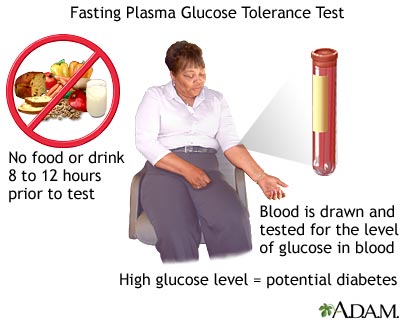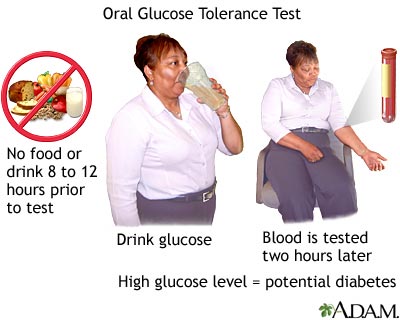If you have a family history of diabetes chances are that at some point you will have to take a glucose intolerance test. If your doctor recommends a glucose intolerance test, don’t worry, it isn’t the kind of test you have to study for or really even the kind of test you can fail. A glucose intolerance test is designed to test the way your body metabolizes the glucose (sugars) that you ingest.
The most common type of glucose intolerance test is the oral glucose tolerance test. For this test you will usually be asked to fast for several hours before the test begins. Upon arriving for your test your blood sugar will be checked, then you will be given a glucose solution to drink. You blood will then are sampled at intervals after you have ingested the glucose solution so that the doctor can see how well your body manages the glucose.
The second and less common type of glucose intolerance test it the intravenous glucose tolerance test. As the name suggests this test involves a glucose solution being injected directly into a vein so that glucose levels can be tested. While this type of test is much quicker than the oral glucose tolerance test it may cause some pain, and due its invasive nature it is little used today.
No matter what kind of glucose intolerance test your physician seems to prefer, the important thing is that you get it done. If you have a family history of diabetes and begin to develop a pre-diabetic condition your risk for heart disease goes up almost from the first day your blood glucose level begins to hover at the very edge of the normal range. Like most diseases, the key to proper management of glucose related health problems like in early detection and treatment and this can best be done with a glucose intolerance test.


